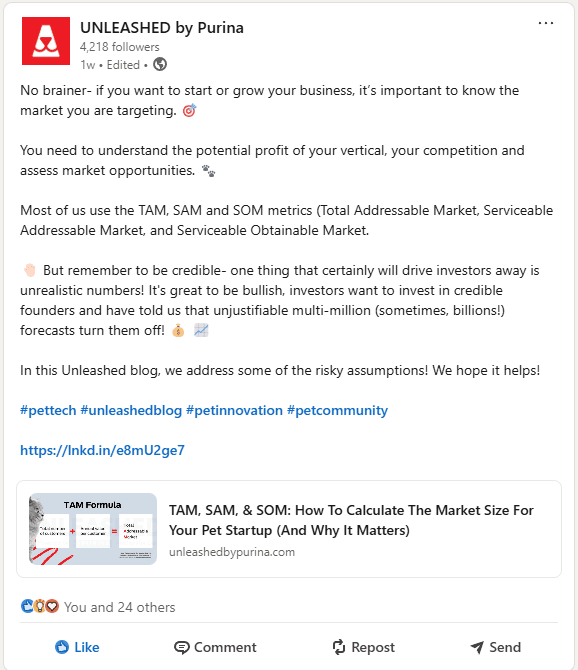
Need a boost in your sales this quarter?
These marketing strategies for pet startups will get your P&L purring.
We’ll cover a wide range of marketing ideas for all pet startups, plus some specific techniques that work well for marketplaces, digital tools, and vet tech businesses.
We’ve highlighted how pet startups of every level, from MVP to established businesses, can get started with these strategies too.
Sound good? Let’s dive right in.
Best marketing strategies for all pet startups
Regardless of the type of pet startup you run, these marketing strategies are foolproof ways to reach your audience. You just have to tweak the approach to your specific audience. Read on to learn how.
Create an educational hub
We’re starting with the basics as it’s a fundamental piece of marketing for pet businesses.
Whether you cater to pet parents or industry professionals, education is an easy, low-cost way to reach your audience and position your brand as an expert voice.
In our case, we’re creating an educational hub on the Unleashed by Purina blog to help pet startups uplevel their businesses. Sharing on LinkedIn helps us keep in touch with our audience.

You can also leverage this technique regardless of where you are in your business’ life cycle.In fact, this is an amazing place to start for new pet startups as it builds your credibility even before you have customers.
How to get started:
- Choose a platform – Consider where your audience hangs out the most. If you’re a vet tech business, perhaps LinkedIn is best.
- Batch create content – Consistency is key so backlog your blogs, social media posts, and videos for the next month or quarter.
- Record every question you get – Write down any questions your customers ask you as these make great content topics.
Partner with pet influencers
Influencer marketing can be very powerful for pet startups.
For example, Purina Pro Plan partners with vet influencer Andre Santos. He has a large, active following of pet parents and vets alike.
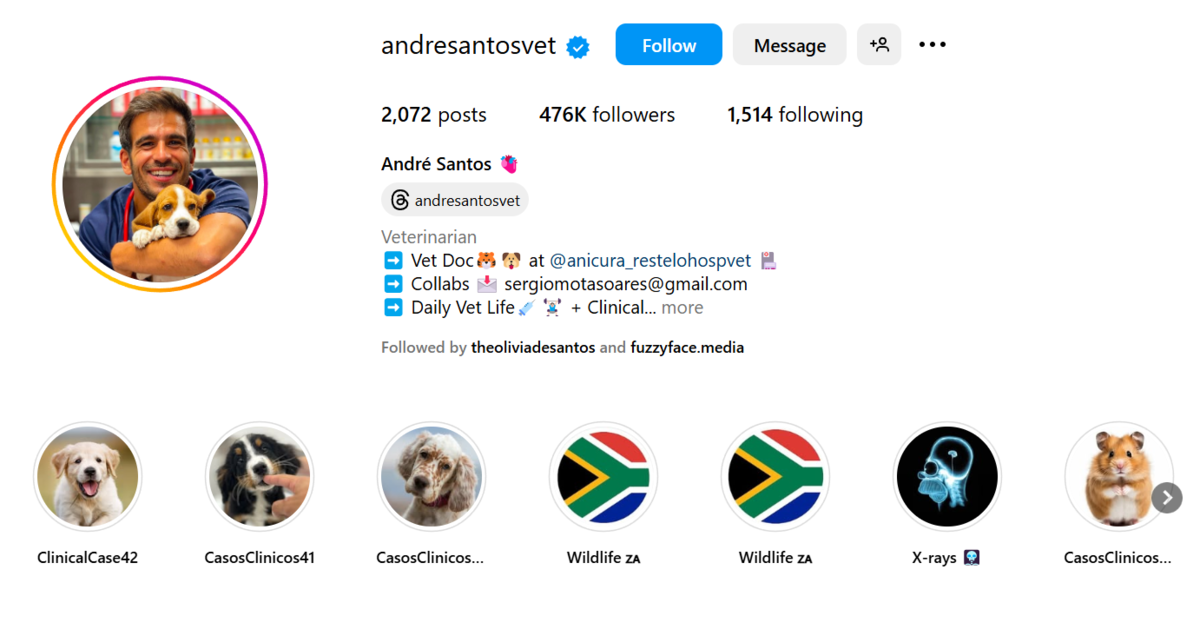
This can work just as well for directories and e-commerce pet startups. For example, commission a pet influencer perusing your online pet store or searching for nearby professionals.
If you have a digital service like a vet on-demand platform, ask the influencer to film themselves doing a vet consultation with their pet.
And what about products for pet professionals? This works for them too. For example, if your product is aimed at groomers, seek out a popular groomer who is admired and followed by other groomers.
How to get started:
- Consider your audience – Think about who your core audience would be following.
- Negotiate rates – Established influencers may already have a media pack. Other, smaller influencers may be willing to trade for free access to your service.
- Diversify your influencer pool – Contact a mix of large, medium and small influencers for the best results with multiple audiences.
Leverage user-generated content
User/generated content (UGC) is when you share photos or videos of customers using your products.
So what’s the difference between UGC and influencer marketing? Good question.
Normally, UGC is free content that your community has created organically or with a little encouragement. Whereas influencer marketing is a hired advertising service.
For example, Different Dog often reposts photos and videos of their customers’ dogs on their feed.
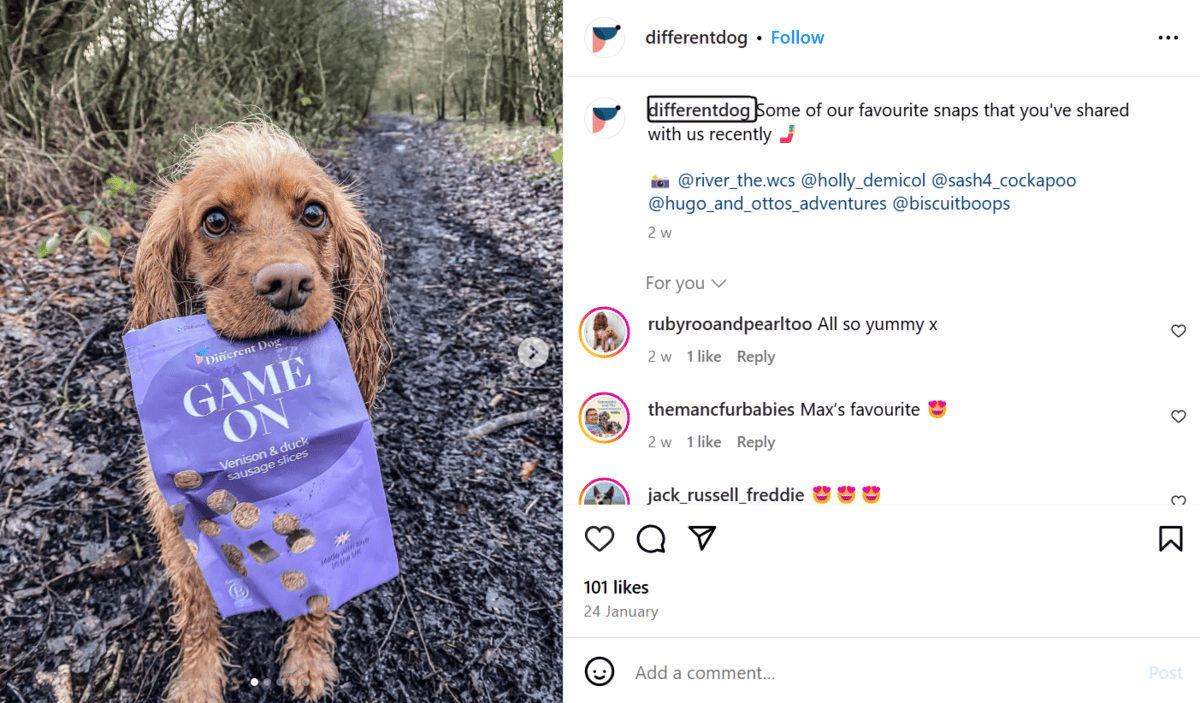
If you’re at the MVP stage, you can still make this work. As you conduct market research with your product, encourage your first users to record their experiences using it. Not only will you get some great content to post on your platforms, but you’ll also get feedback in real time.
How to get started:
- Encourage organic UGC – By creating a culture of sharing your customers’ content on your platforms, you encourage more people to participate.
- Host a competition – To enter your giveaway, ask your customers to send photos or create a video of them using your product. Then share these on your platform.
- Consider UGC creators – Reach out to small influencers to see if they would be interested in creating user-generated content for you.
Build your mailing list
Though this seems like a simple strategy, it’s still absolutely crucial for all pet startups.
Why? One word: Ownership.
Just a couple of weeks ago, TikTok was banned in the US. Though the platform was quickly reinstated, the event showed how delicate social media platforms are.
You need to have at least one place where you can contact your audience without social media. Email marketing is still the most reliable way to do that.

Some pet brands prefer to host a membership space or forum on their website, which may work for marketplaces, digital tools and e-commerce platforms.
If you have a younger audience receptive to SMS/WhatsApp marketing, try creating a phone list instead.
How to get started:
- Create a freebie (lead magnet) – This is usually a downloadable PDF guide, interactive quiz, or free tool in exchange for your customer’s email address.
- Schedule a welcome email sequence – Have a sequence of 7 to 10 emails ready to release over the course of 2-4 weeks when someone downloads your lead magnet.
- Send high-value emails – Don’t just spam your audience with new products or hard sells. Instead, nurture your community with expert advice and behind-the-scenes insights.
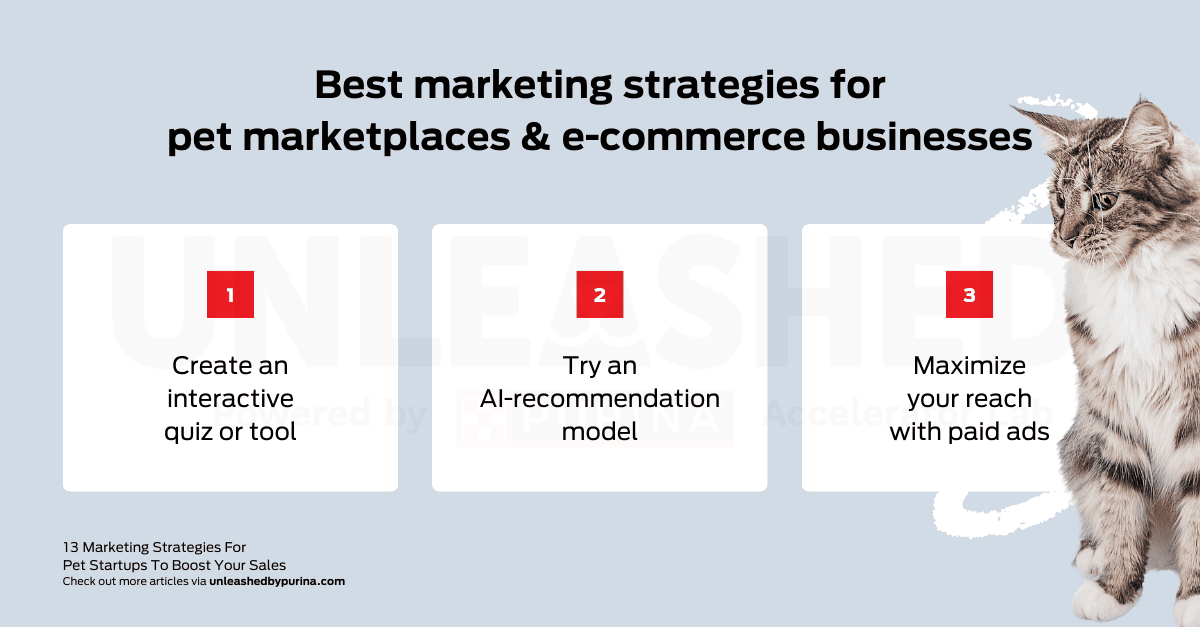
Best marketing strategies for pet marketplaces and e-commerce businesses
Pet marketplaces and e-commerce businesses can find it particularly difficult to grow.
Here’s what we suggest:
Create an interactive quiz or tool
People love quizzes. It plays on the psychology of gamification as well as helping people feel they are getting a personalised result.
This works well for pet marketplaces and e-commerce businesses because you can encourage prospective customers to get tailored results on what service they need or products to buy.
Quizzes aren’t the only interactive models that work. You could also try calculators like Lily’s Kitchen does for their food.
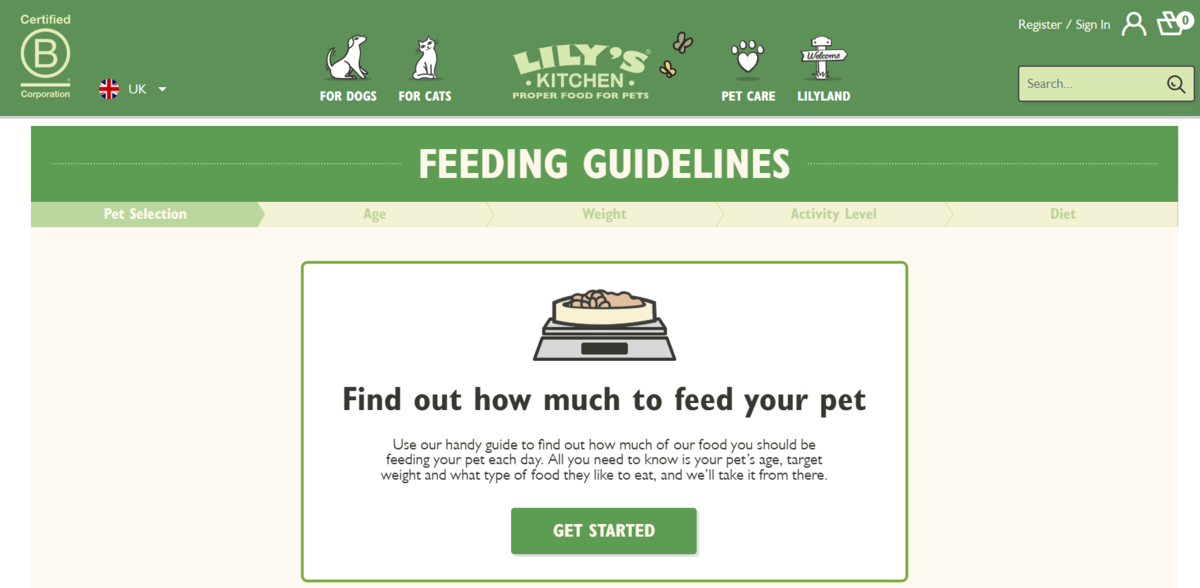
You could also create interactive tools that are less catered to your offers. For instance, a pet age or weight calculator that is universally helpful. These types of tools are shareable and addictive, making them a great marketing tool.
How to get started:
- Use a template – Most major website platforms have tools for creating quizzes. You can also use email platforms or Typeform.
- Ask for an email address – Make it a necessary requirement for quiz takers to enter their email address to start the quiz. This helps you build your mailing list.
- Distribute on other platforms – Post your quiz everywhere and as often as you can. This is a great first touch point for new customers.
Try an AI-recommendation model
AI chatbots and recommendation models are becoming more and more popular.
Why do these work for marketing? Firstly, because it’s a novelty that customers will enjoy using. You can advertise that your AI “assistant” will help your customers find what they are looking for and this can draw interest.
Moreover, by giving personalised recommendations, your AI bot is tapping into the same satisfaction as quizzes. According to McKinsey, companies that leverage personalisation bring in 40% more revenue than those that don’t.
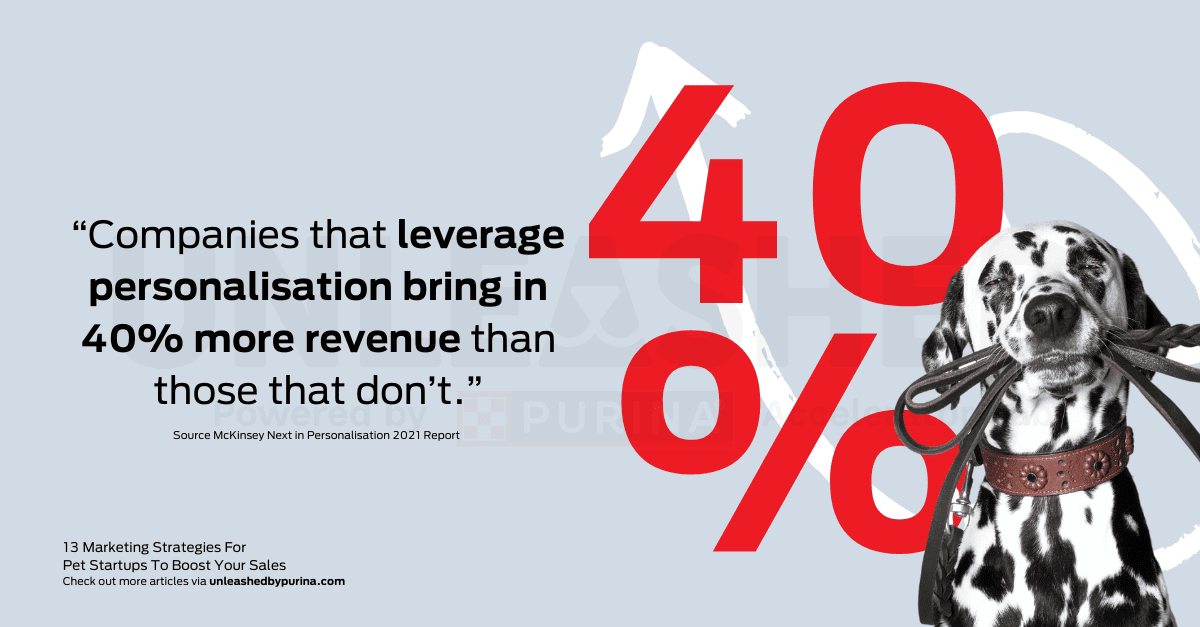
However, the technology here is still developing, and it can be expensive to hire a specialist to help. For an easier (cheaper) entry point, train an AI chatbot to give generic recommendations related to your marketplace or online store.
How to get started:
- Use a template – Most major website platforms have tools for creating quizzes. You can also use email platforms or Typeform.
- Ask for an email address – Make it a necessary requirement for quiz takers to enter their email address to start the quiz. This helps you build your mailing list.
- Distribute on other platforms – Post your quiz everywhere and as often as you can. This is a great first touch point for new customers.
Maximize your reach with paid ads
Incoming traffic will always be the key metric for the growth and sales of your marketplace or e-commerce business. As high traffic is so important, SEO is the key long-term strategy you should be investing in over the long-term.
However, if you want a quick boost in sales or more aggressive growth, paid ads are a great way of bringing in more customers.
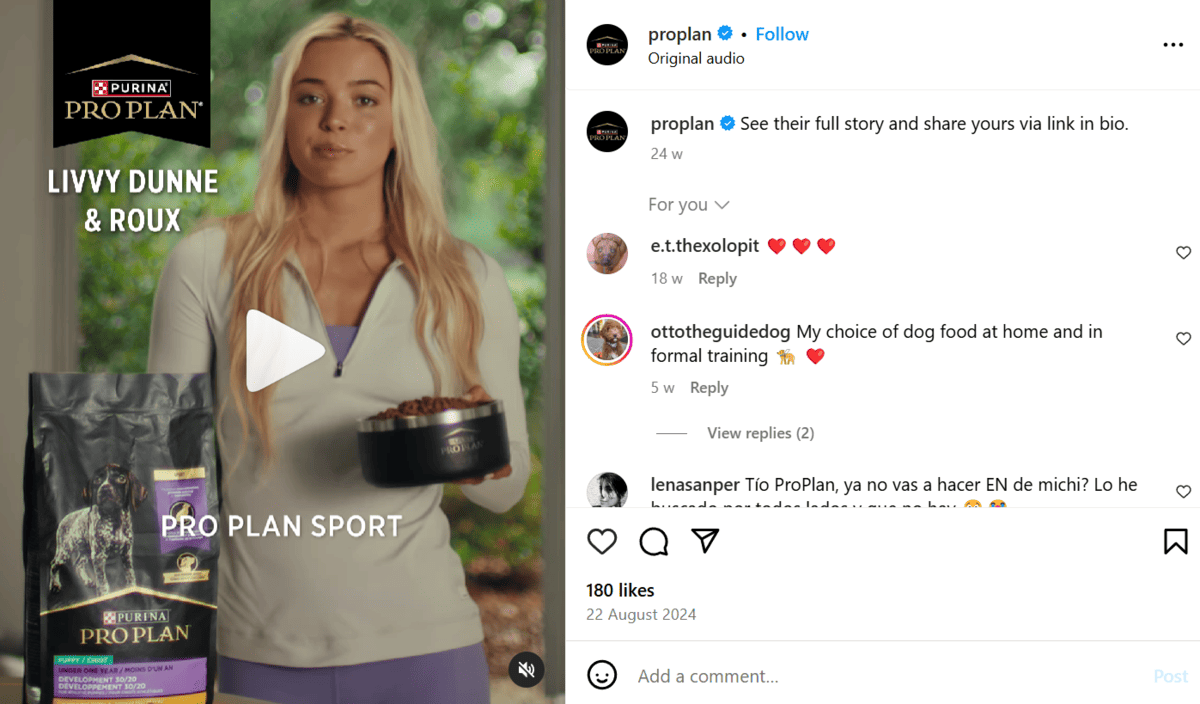
How to get started:
- Lead with value – Advertise your lead magnet (freebie for your mailing list) as opposed to your product. This is more likely to get clicks.
- Start with a modest budget – Ads require experimentation.
- Hire a professional – If you have the budget, work with a professional.
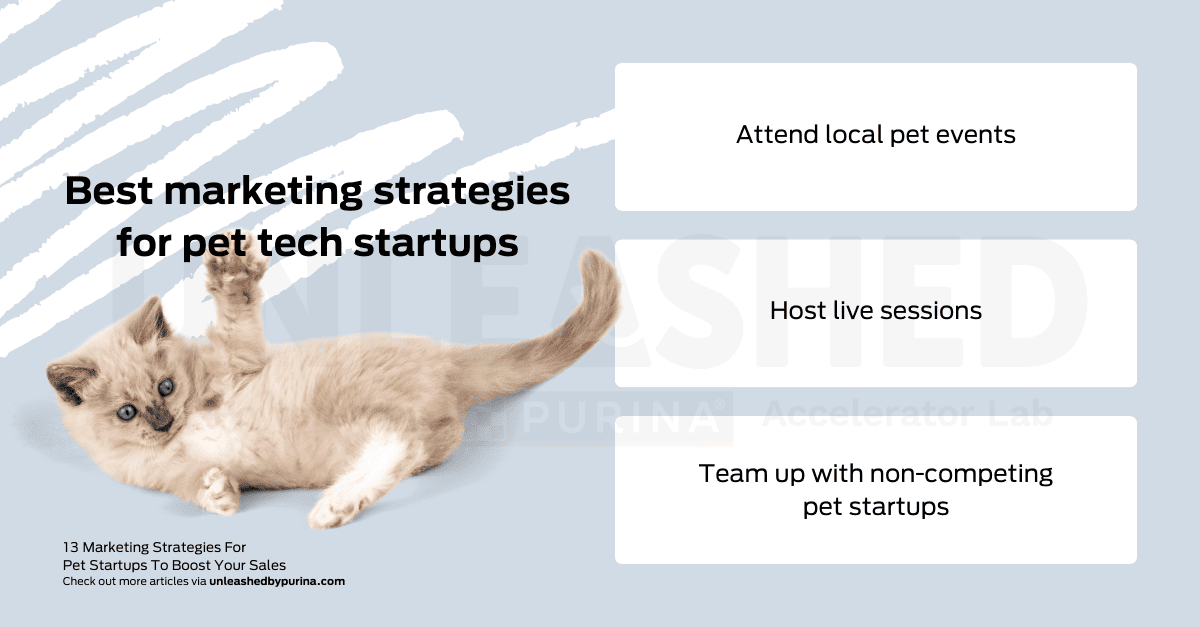
Best marketing strategies for pet tech startups
If you create digital or physical tools for improving the lives of pets (e.g. pet cameras, mobile trackers, etc) here are some strategies to add to your marketing plan.
Attend local pet events
Showing your tool to real-life pet parents is one of the best ways to get sales.
The key is to choose the best events to reach your target audience.
As a digital tool for breeders, Unleashed by Purina alum, Breedera, has found success exhibiting at several events like Crufts, Petcare Innovation Europe and the Westminster Kennel Club.

Note: live events can be expensive for a full exhibit. If you’re early in your startup journey, consider smaller events or volunteering to speak, as opposed to hosting a stall.
How to get started:
- Research all the ways you can participate – You can exhibit, give a talk, host a workshop, sponsor the event, or visit and network.
- Budget appropriately – If you plan to exhibit, bear in mind there are far more costs than just the stall.
- Start local – It’s good to practice with local pet industry events before going to international events.
Host live sessions
Q&As, workshops, webinars and demonstrations are great for pet tech startups of all kinds, even MVP-level businesses.
You can both show your team’s expertise and post replays to your educational hub.
These are also great lead magnets for building your mailing list.
Unleashed by Purina alum, FERAGEN, hosts regular webinars on hereditary diseases in dogs to help educate breeders on how to choose the best breeding partners.

How to get started:
- Brainstorm relevant topics – Aim to answer your audience’s most burning questions.
- Try different formats – Your audience may resonate more with Q&As than webinars or vice versa. Experiment to see what works.
- Use paid ads – Advertise your live session to increase signups.
Team up with non-competing pet startups
There’s strength in numbers when you collaborate with other pet startups.
For example, online vet service FirstVet partners collaborate with pet insurance companies to bring more value to their customers.
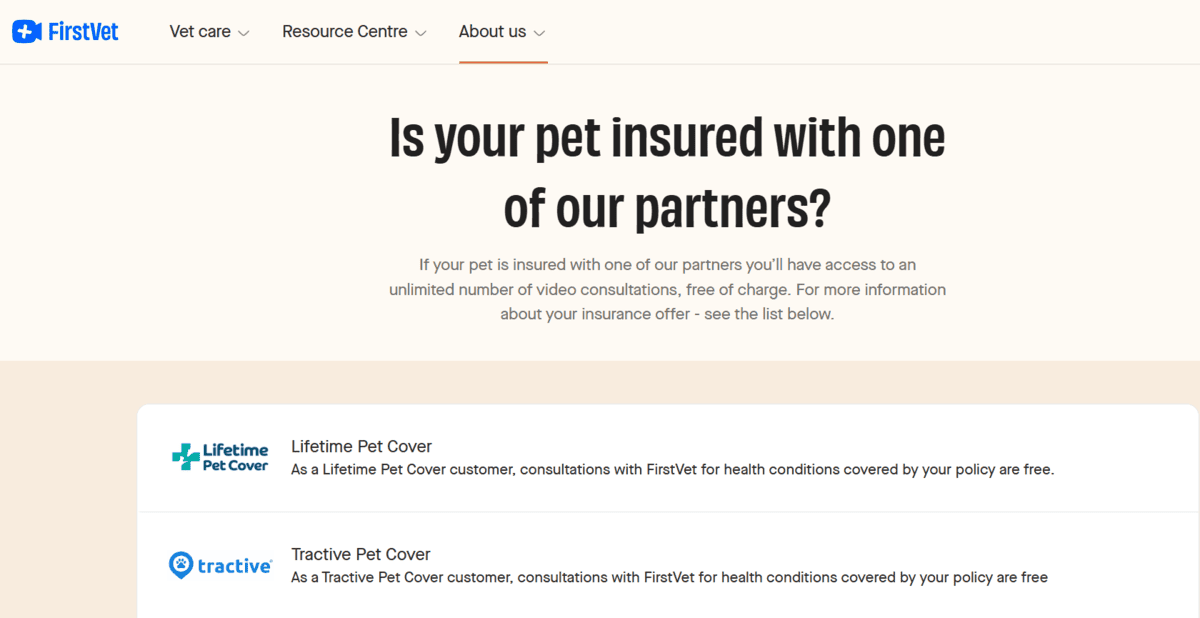
This cross-promotion increases your reach, especially if you partner with larger companies than yours, though typically it’s more advantageous for both parties if you’re at a similar level of growth.
How to get started:
- Come with a pitch – Companies prefer when you have a ready-made collaboration opportunity in mind.
- Agree on cross-promotion – Don’t just agree on the details of your collab, but also how you’ll market each other’s businesses during your partnership.
- Track your success – Analyse how beneficial your partnership is bi-annally or quarterly to ensure it continues to yield results.
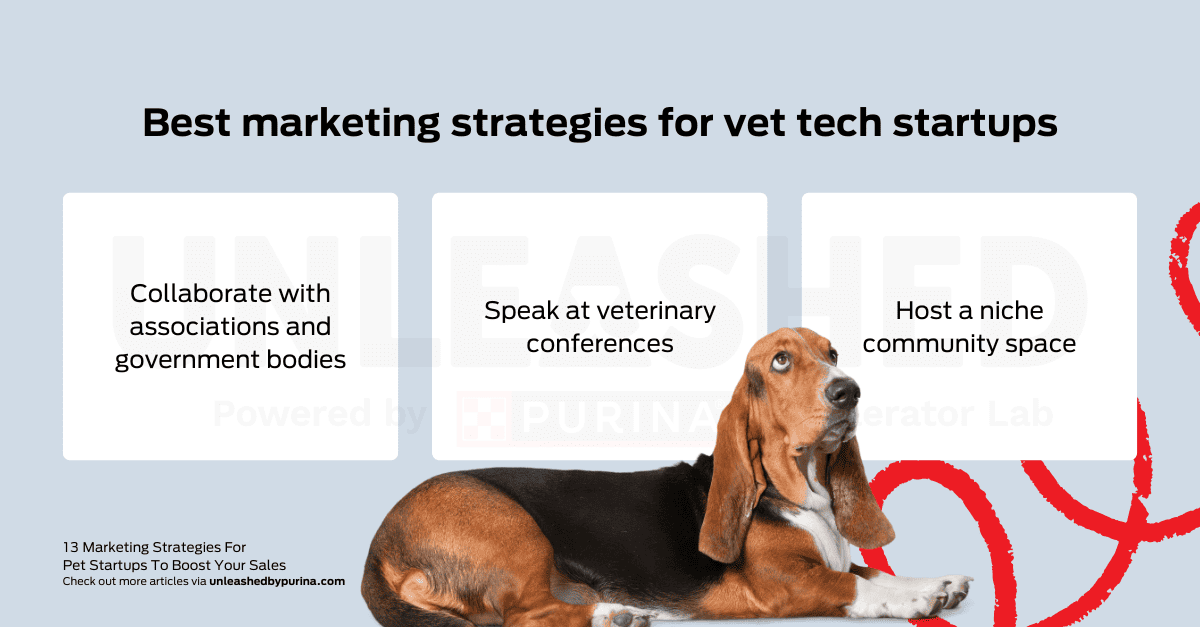
Best marketing strategies for vet tech startups
If your startup is in the biomedical field, such as alternative pet foods, health labs, or virtual vet care, this section is for you.
Collaborate with associations and government bodies
If your vet tech startup could do with government or regulatory support, start building these alliances early.
FERAGEN partners with the breeders association to promote screening dogs among breeders. They have partnered with over 100 kennel clubs and associations worldwide.
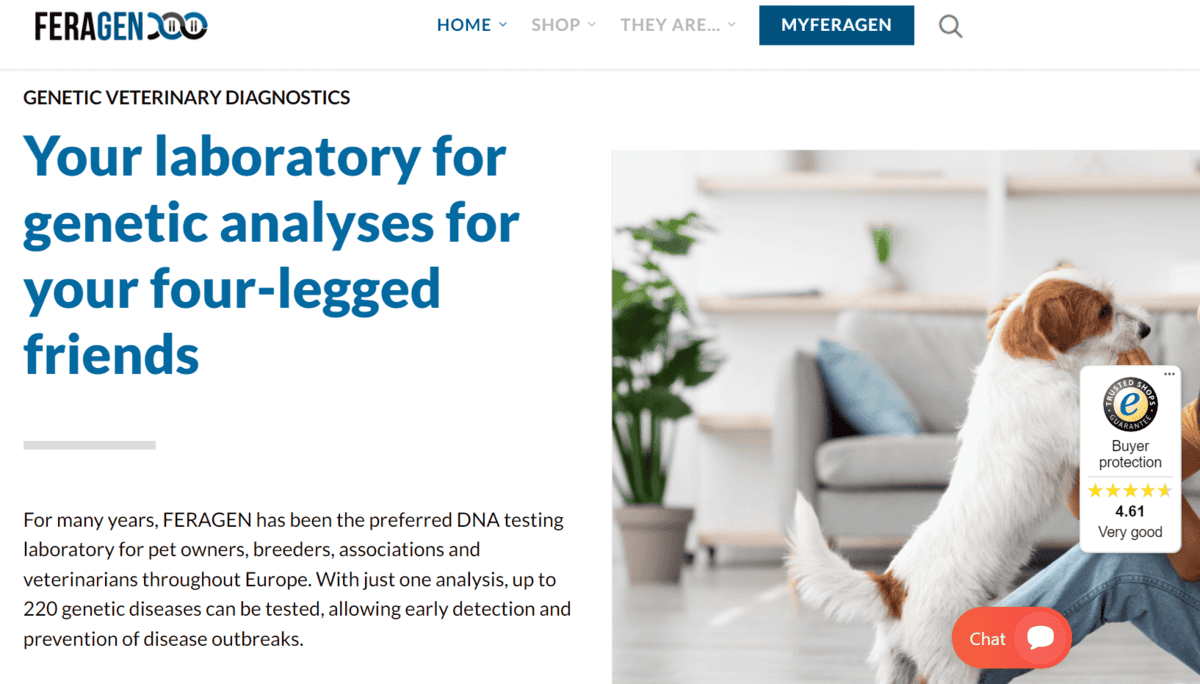
How to get started:
- Find the right contact – Contacting the right person can help expedite communication.
- Offer value – Answer the question: why should this association partner with us?
- Be patient – A big part of working with governing bodies could include educating them on the problem you solve. Be patient and understanding as you work with them.
Speak at veterinary conferences
Attending local and international veterinary conferences helps educate the vet community about your product.

But why is speaking specifically important? When it comes to vet tech, you’re often solving issues that have well-worn paths. You may be converting vets to think about an issue differently than they may have done for several years. This is far more effective with an excellent keynote speech or workshop than by individually handing out cards. Keynote speeches are often recorded too,which widens your audience beyond conference attendees.
If your pet startup is relatively new, speaking is a great entry point too, as it relies on your expertise rather than your company’s success. Having a speaking credit at veterinary conferences can also be attractive to potential investors.
How to get started:
- Start local – Practice your delivery with small local events first.
- Choose the right format – Not all founders are gifted speakers. You may prefer to run an interactive workshop or demo rather than a thought-leading speech.
- Contribute to written materials – Conferences often have written materials and goody bags. Ask if you can contribute something branded to help with brand awareness.
Host a niche community space
Specialised innovations, like yours, do well with a loyal core following of professionals who believe in your product. Creating a community space also helps gather feedback and suggestions.
Though they aren’t in vet tech, Unleashed by Purina alum, DOGAMÍ, leverages community spaces like Discord and Reddit to nurture their audience.

Bear in mind that managing community spaces can be time-consuming, so ensure that you have a dedicated team member to create new content.
How to get started:
- Choose a platform – For example, Facebook, Discord, LinkedIn or your own website.
- Create consistent content – Your community expects regular updates and content to keep them engaged.
- Encourage discussion – This is what keeps the community spirit alive.
Final thoughts: keep your pet business marketing focused
Although we’ve just rattled off a list of effective marketing strategies for pet startups, pause before you try them.
First, assess which strategies will work best for your audience, budget and runway.
For example, SEO and email marketing do not create fast results. So, if you have a short runway, you’re better off with collaborations, live events, and UGC.
Likewise, if you’ve just launched your pet startup and are building an MVP, paid ads are not worth investing in yet. You don’t know your audience or your product well enough.
Bottom line: Choose one or two marketing strategies that suit your pet brand, and go all in for at least three months.
Measure the results and either double down or pivot. The more flexible and focused you are with your marketing efforts, the more sales you’ll unleash over time!